Low-Carb Grocery List: Must-Have Foods for Weight Loss
A low-carb diet is a popular and effective approach to weight loss, health improvement, and managing certain conditions like diabetes. By reducing the number of carbohydrates you consume, your body is encouraged to burn fat for energy, leading to numerous health benefits such as weight loss, improved blood sugar levels, and enhanced energy. However, success on a low-carb diet hinges on having the right foods available, which means having a well-stocked pantry and refrigerator.
When embarking on this journey, one of the biggest challenges is navigating grocery stores where high-carb, processed foods dominate the shelves. You may find it overwhelming to identify which items fit your new lifestyle. But fear not! In this article, I will guide you through creating a comprehensive low-carb grocery list. From fresh produce to pantry staples, this guide will ensure that you have everything you need to stay on track.
Low-Carb Diet Grocery List
Here’s a detailed grocery list to help you get started on your next shopping trip:
- Vegetables: Spinach, broccoli, cauliflower, zucchini, bell peppers, tomatoes.
- Fruits: Avocados, strawberries, raspberries.
- Meat/Poultry: Chicken thighs, grass-fed beef, salmon, shrimp.
- Dairy: Cheddar cheese, Greek yogurt, heavy cream.
- Fats and Oils: Olive oil, coconut oil, avocado oil.
- Frozen Foods: Frozen spinach, frozen berries, frozen shrimp.
- Condiments: Mustard, mayonnaise (made with avocado oil), hot sauce.
- Nuts/Seeds: Almonds, walnuts, chia seeds, flaxseeds.
- Spices: Cumin, turmeric, cinnamon, rosemary.
Essential Categories for Your Low-Carb Grocery List
1. Produce: The Foundation of a Low-Carb Diet
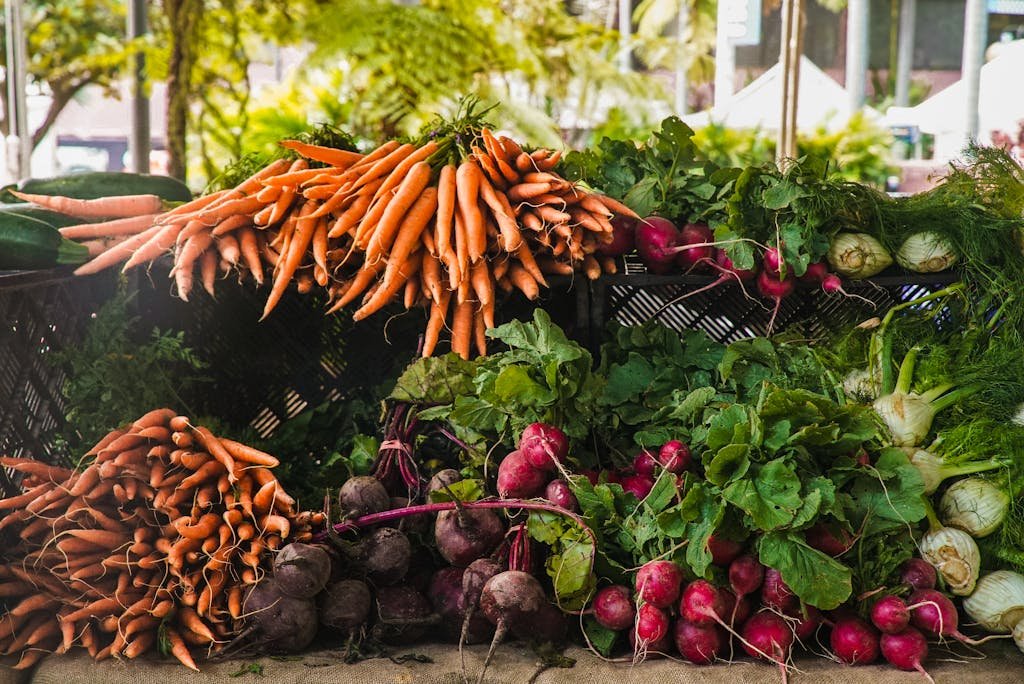
When it comes to fresh produce, focus on non-starchy vegetables. These are packed with essential vitamins, minerals, and fiber, all while being low in carbohydrates. Eating a variety of these vegetables helps maintain nutritional balance, promotes digestive health, and can be prepared in countless ways to keep your meals interesting.
Low-Carb Vegetables
- Leafy greens: Spinach, kale, Swiss chard, arugula, and lettuce are excellent low-carb, nutrient-rich options.
- Cruciferous vegetables: Broccoli, cauliflower, cabbage, Brussels sprouts, and bok choy are great for both cooked and raw dishes.
- Zucchini and eggplant: These versatile vegetables can be roasted, grilled, or even used as a substitute for pasta.
- Peppers: Bell peppers, jalapeños, and other varieties add flavor and crunch without excess carbs.
- Cucumbers and celery: Low in carbs and perfect for snacking or salads.
Low-Carb Fruits
While many fruits are high in natural sugars, some can still fit into a low-carb diet in moderation:
- Berries: Raspberries, blackberries, strawberries, and blueberries are lower in sugar compared to most fruits and are packed with antioxidants.
- Avocados: A unique, nutrient-dense fruit that’s high in healthy fats and very low in carbohydrates.
- Tomatoes: Technically a fruit, tomatoes are low in carbs and provide plenty of nutrients like vitamin C and potassium.
Tips for Incorporating More Produce
- Use vegetables as the base for your meals: Think salads, stir-fries, or roasted veggie platters.
- Swap high-carb sides like potatoes with mashed cauliflower or zucchini noodles.
- Keep a variety of fresh and frozen vegetables on hand to add to every meal.
2. Meat, Poultry, Seafood, and Eggs: Your Protein Powerhouses
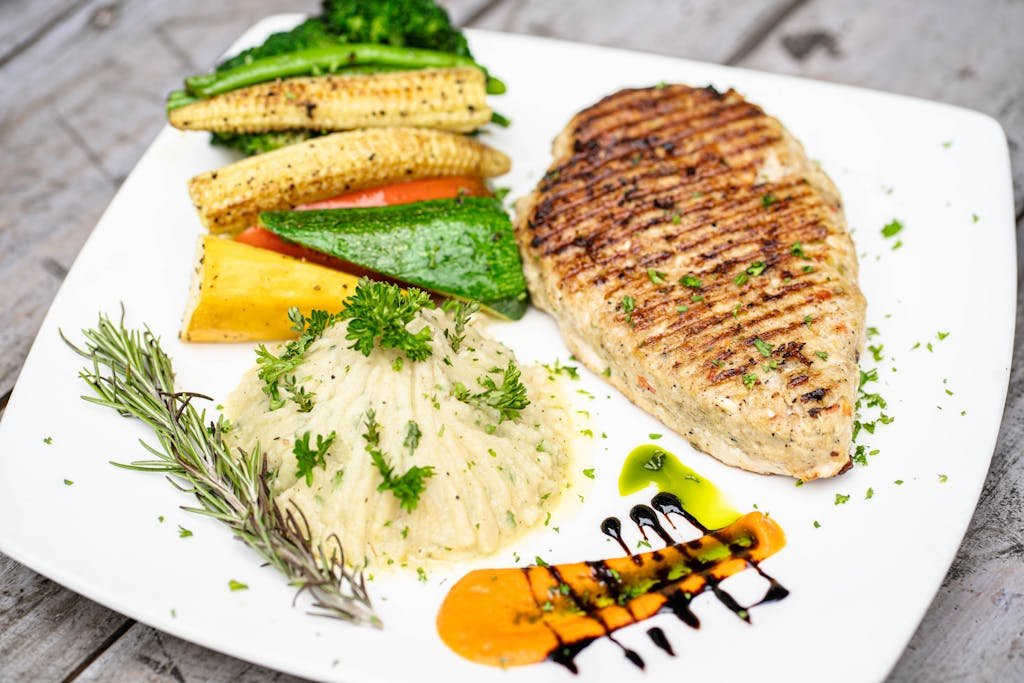
Protein is crucial on a low-carb diet because it helps maintain muscle mass, keeps you feeling full, and plays a key role in metabolism. Lean meats, fatty fish, and eggs are not only satisfying but are naturally low in carbs. However, it’s important to choose high-quality proteins and prepare them in healthy ways.
Healthy Protein Sources
- Meat: Beef, pork, lamb, and venison are all carb-free. Opt for grass-fed or organic meat when possible.
- Poultry: Chicken, turkey, and duck are lean sources of protein. The skin contains healthy fats, but be cautious of any processed forms like bread or fried chicken.
- Seafood: Salmon, mackerel, sardines, and other fatty fish are rich in omega-3 fatty acids. Shrimp, scallops, and white fish are also great low-carb choices.
- Eggs: A versatile, nutrient-dense food that can be enjoyed at any meal. Organic, free-range eggs tend to have a better nutrient profile.
Tips for Cooking and Preparing Proteins
- Grill or roast meats to enhance flavor without adding unnecessary carbs.
- Experiment with spices and herbs to make your dishes flavorful without relying on high-carb sauces.
- Cook extra portions to use in salads, wraps (with lettuce or low-carb tortillas), or as a snack.
3. Dairy: Rich and Full-Fat Options for a Low-Carb Diet

Contrary to common belief, full-fat dairy products can be part of a healthy low-carb diet. Full-fat versions are typically lower in carbohydrates than their reduced-fat counterparts because less sugar is added. However, if you’re lactose intolerant or vegan, there are plenty of alternatives.
Low-Carb Dairy Options
- Cheese: Most cheeses are very low in carbs. Look for cheddar, mozzarella, cream cheese, blue cheese, and Parmesan.
- Greek yogurt: Opt for plain, unsweetened Greek yogurt, which has fewer carbs and more protein than regular yogurt.
- Heavy cream: A great substitute for milk in coffee or cooking, as it contains very few carbs.
- Butter and ghee: Full of healthy fats, butter, and ghee are excellent choices for cooking and flavoring dishes.
Alternatives for the Lactose Intolerant or Vegan
- Coconut cream: A rich, dairy-free substitute for cream.
- Almond milk: Opt for unsweetened versions to keep the carb count low.
- Cashew or macadamia nut-based cheeses: These vegan alternatives are usually low in carbs.
Read Also: Banish Fruit Germs with Baking Soda!
4. Fats and Oils: Fueling Your Low-Carb Lifestyle
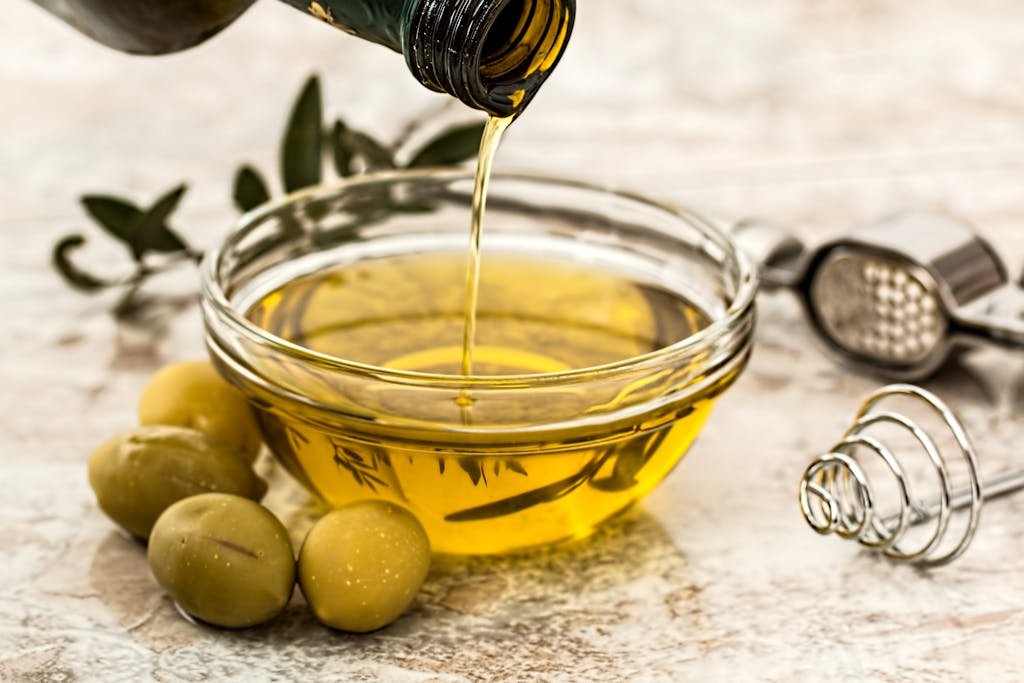
Healthy fats are essential on a low-carb diet, providing energy and keeping you satisfied. It’s important to choose the right types of fats and oils to support overall health.
Healthy Fat Sources
- Olive oil: Rich in heart-healthy monounsaturated fats and great for salads and low-heat cooking.
- Coconut oil: High in medium-chain triglycerides (MCTs), which can provide a quick source of energy.
- Avocado oil: Versatile for both cooking and drizzling over salads.
- Nuts and seeds: Almonds, walnuts, chia seeds, and flaxseeds are excellent for snacking or adding to meals.
Tips for Using Fats and Oils in Cooking
- Use olive oil or avocado oil for salad dressings or drizzling over roasted vegetables.
- Coconut oil is great for frying or baking due to its high heat tolerance.
- Incorporate avocados and nuts into your meals for added healthy fats.
5. Frozen Foods: Convenience Without the Carbs

Frozen foods can be a lifesaver when you’re short on time. Many frozen options are just as nutritious as fresh ones, provided you select whole, unprocessed items.
Low-Carb Frozen Food Options
- Frozen vegetables: Broccoli, cauliflower, spinach, and green beans are great options to have on hand.
- Frozen berries: Perfect for smoothies or as a topping for Greek yogurt.
- Frozen seafood: Shrimp, salmon, and other fish can be quick and easy protein sources.
Tips for Choosing Healthy Frozen Meals
- Avoid frozen meals with added sauces or breading, as these can contain hidden carbs.
- Look for frozen meals specifically labeled as low-carb or keto-friendly if you’re in a pinch.
6. Condiments and Shelf-Stable Items: Adding Flavor without the Carbs

Even on a low-carb diet, you can still enjoy flavorful meals. The key is to choose condiments and pantry staples that are low in sugar and carbs.
Low-carb condiments and Pantry Staples
- Mustard: A tangy, carb-free condiment that can add flavor to meat and salads.
- Mayonnaise: Look for versions made with healthy oils like avocado oil.
- Hot sauce: Most varieties are low in carbs but check for added sugars.
- Vinegar: Balsamic, apple cider, and red wine vinegar are great for marinades and dressings.
- Olives: Low in carbs and perfect for snacking or adding to salads.
Alternatives for High-Carb Condiments
- Swap ketchup for sugar-free or homemade versions.
- Replace BBQ sauce with homemade versions using low-carb sweeteners.
Tips for Reading Food Labels
- Be cautious of “hidden sugars” in sauces, dressings, and condiments. Look for words like “sucrose,” “corn syrup,” or “fructose.”
- Always check the serving size, as small portions can often hide high-carb ingredients.
7. Deli Counter and Salad Bars: Low-Carb Options on the Go
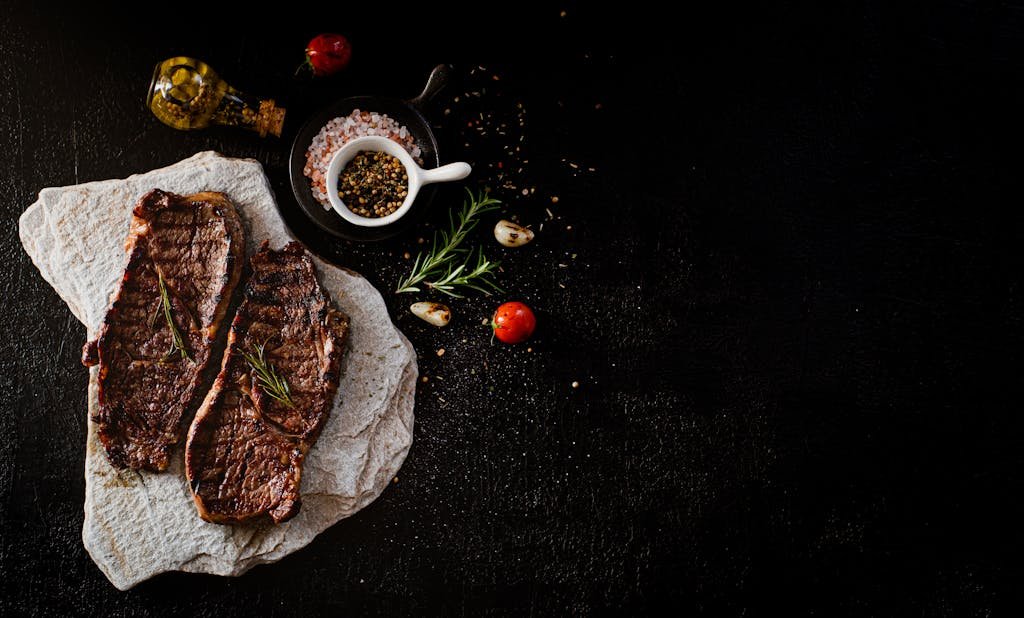
The deli counter and salad bar can be tricky, but with some care, you can find plenty of low-carb options.
Tips for Making Healthy Choices
- Opt for fresh, unsweetened deli meats like turkey, chicken, or roast beef.
- Choose plain grilled or roasted meats over breaded or fried options.
- Load up on leafy greens and non-starchy vegetables at the salad bar and avoid high-carb toppings like croutons or sugary dressings.
8. Other Must-Have Low-Carb Foods
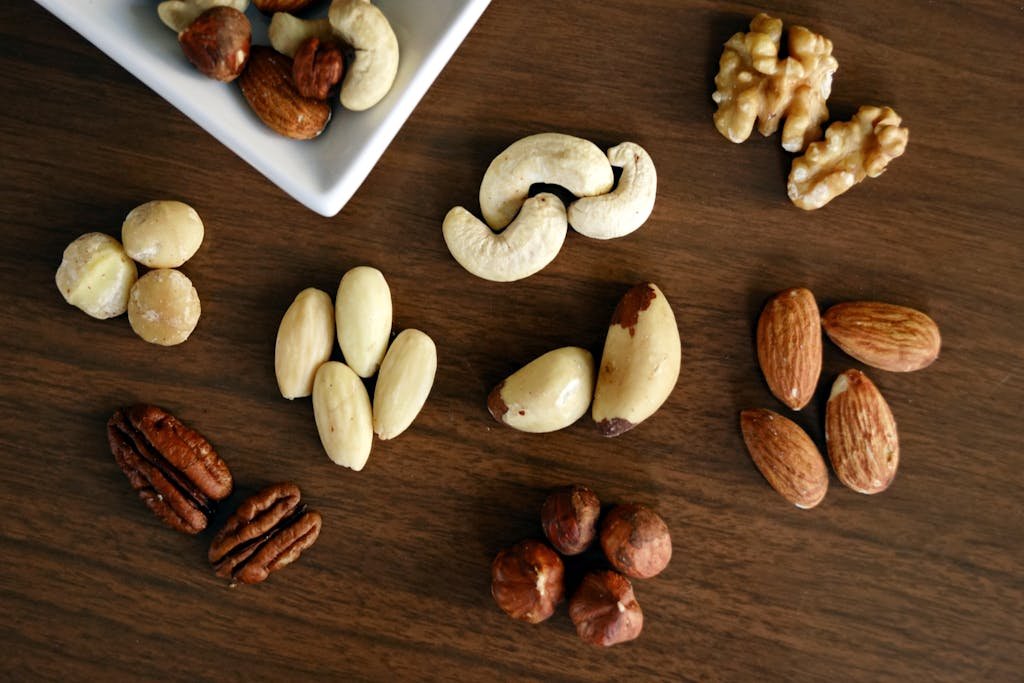
Other food categories are essential to a low-carb diet but don’t fit neatly into the above sections. Nuts, seeds, and spices can add variety and nutrition to your meals.
Low-Carb Nuts and Seeds
- Almonds, macadamia nuts, and pecans are excellent snacks or additions to meals.
- Chia seeds and flaxseeds are high in fiber and can be used in smoothies, yogurt, or homemade low-carb bread.
Spices and Seasonings
- Fresh and dried herbs like basil, cilantro, rosemary, and thyme are carb-free and full of flavor.
- Spices like cinnamon, turmeric, and cumin are not only low in carbs but also have health benefits.
Tips for Successful Low-Carb Grocery Shopping
To make your low-carb shopping experience smoother, keep these strategies in mind:
- Plan your meals: This will help you stick to your low-carb goals and avoid impulse buys.
- Read food labels carefully: Hidden carbs and sugars can be found in many packaged foods, so always check.
- Choose whole, unprocessed foods: These are generally lower in carbs and provide more nutrients.
- Experiment with new foods: Trying out new vegetables, proteins, and spices can keep your meals exciting and satisfying.
Read Also: Restore Your LG TV’s Brilliance: Ultimate Cleaning Guide
Closing Words
Sticking to a low-carb diet can be a challenge, but with a well-stocked pantry and smart grocery shopping habits, you’ll find it much easier to stay on track. By filling your kitchen with nutrient-dense, low-carb foods, you’ll set yourself up for success. Remember, it’s not just about cutting out carbs—it’s about finding new, healthy, and delicious foods to enjoy. So, take the time to explore your options, try new recipes, and most importantly, find what works best for you!






